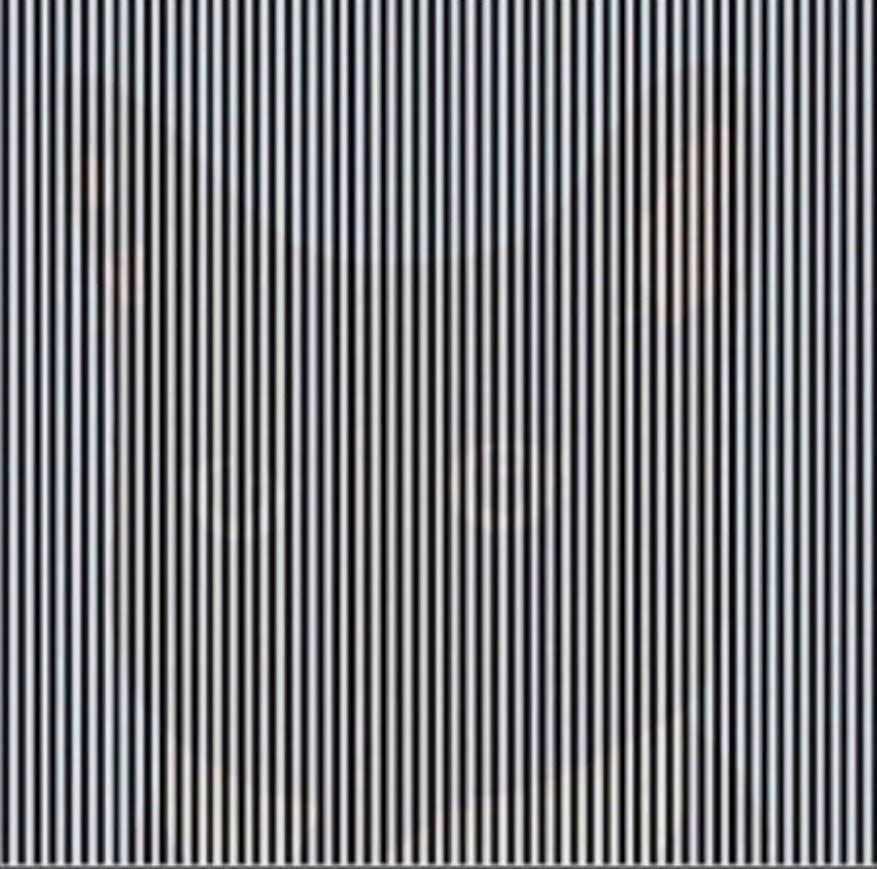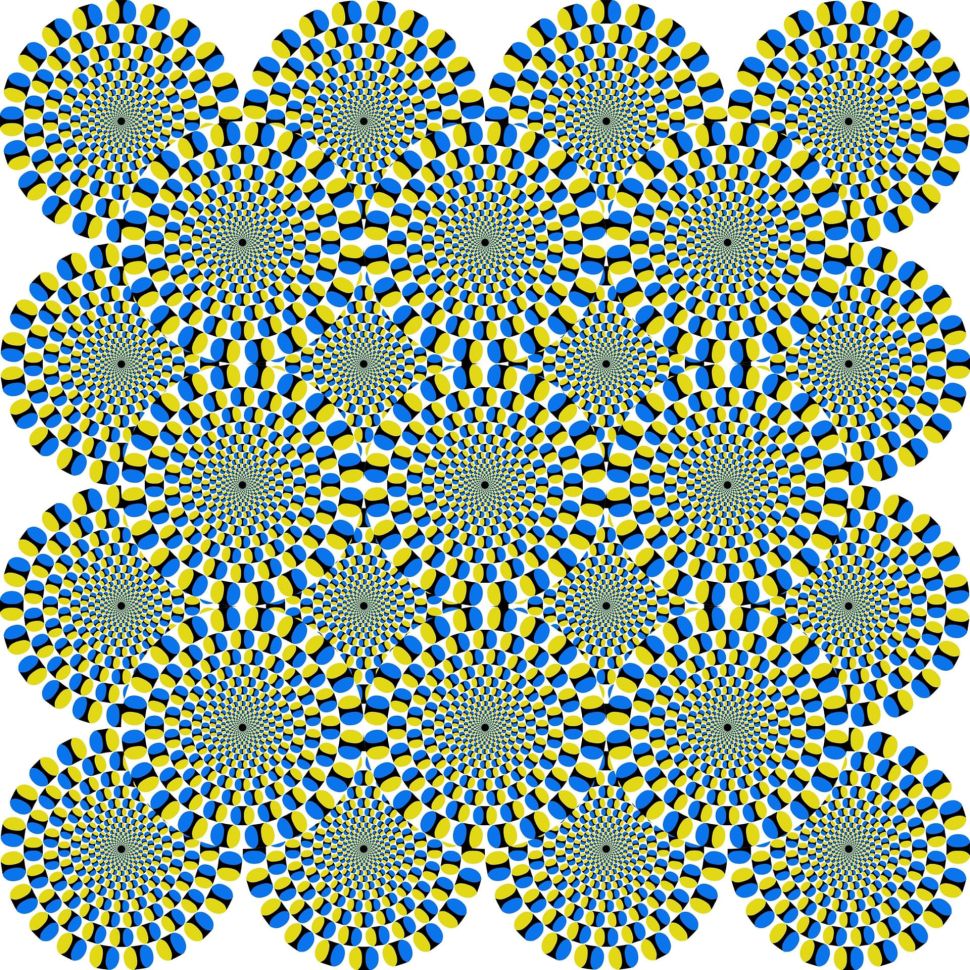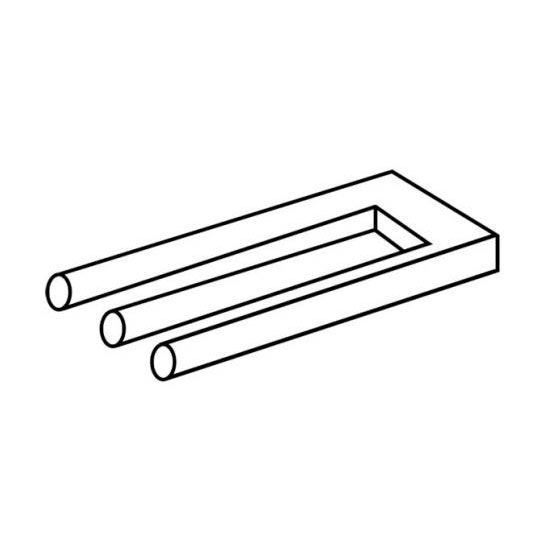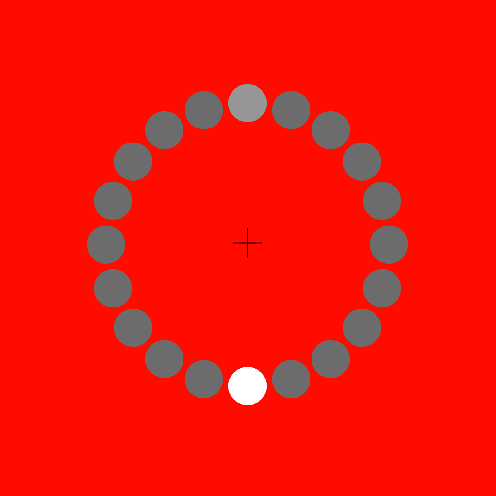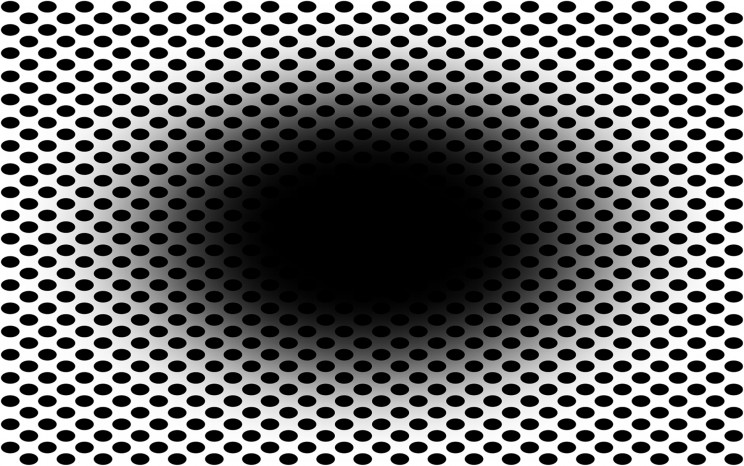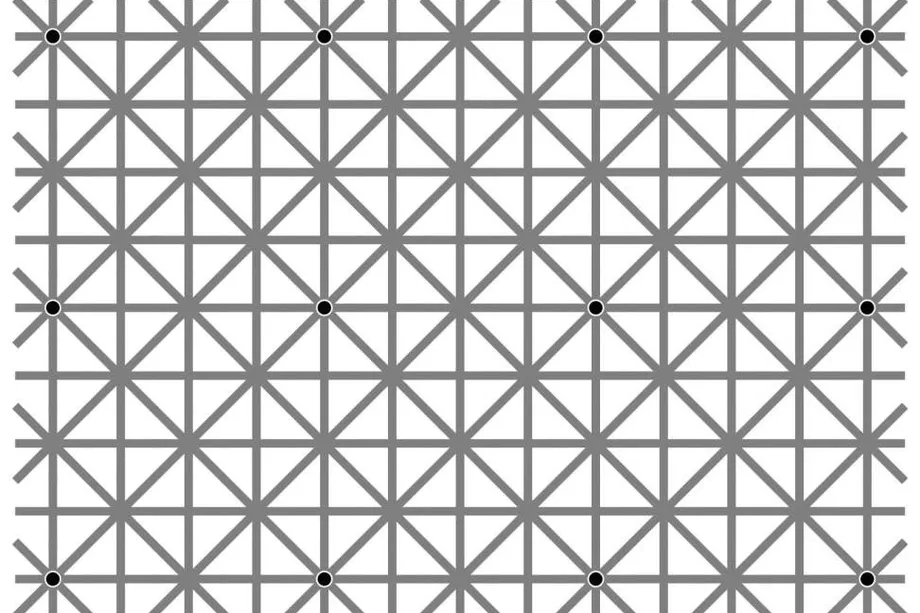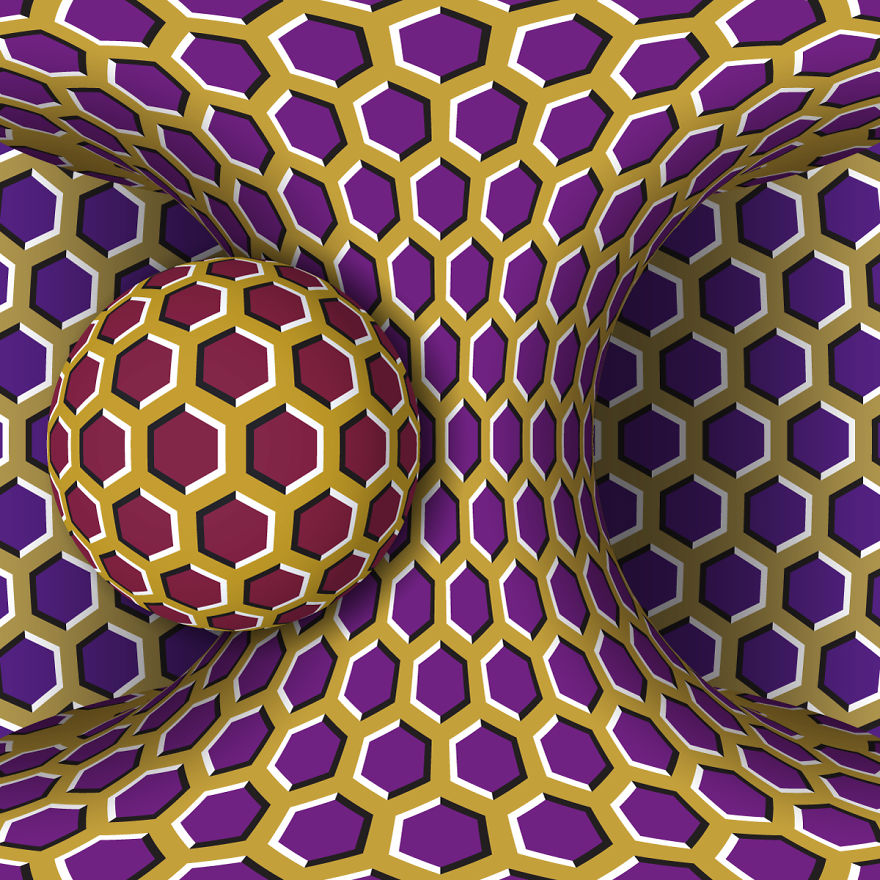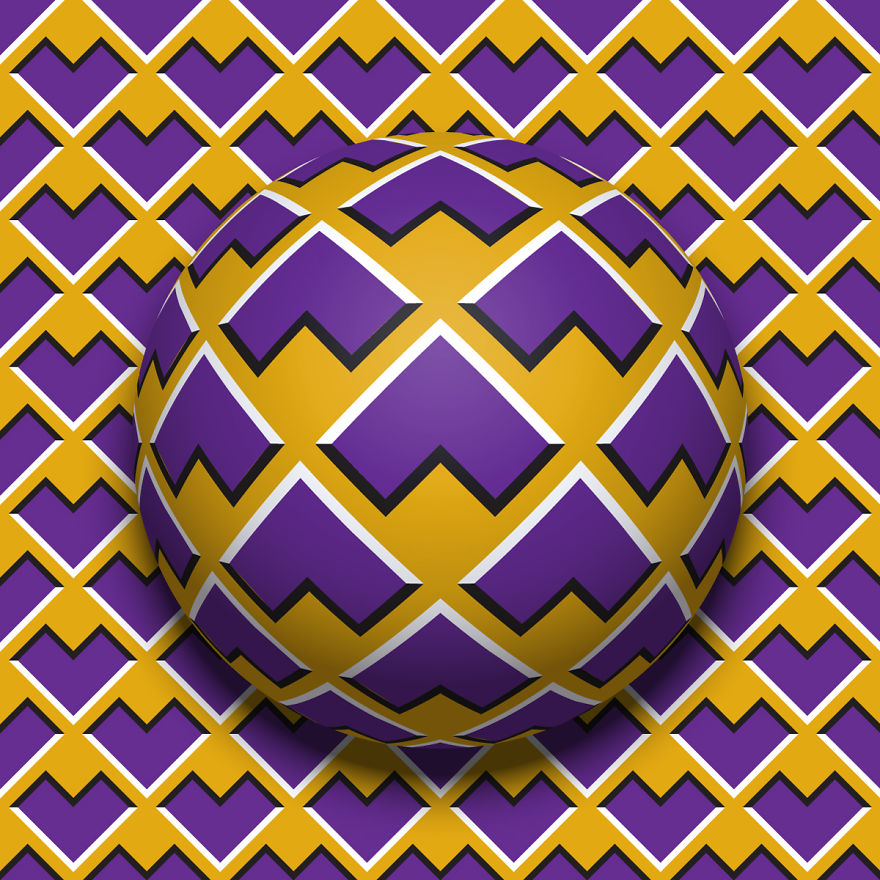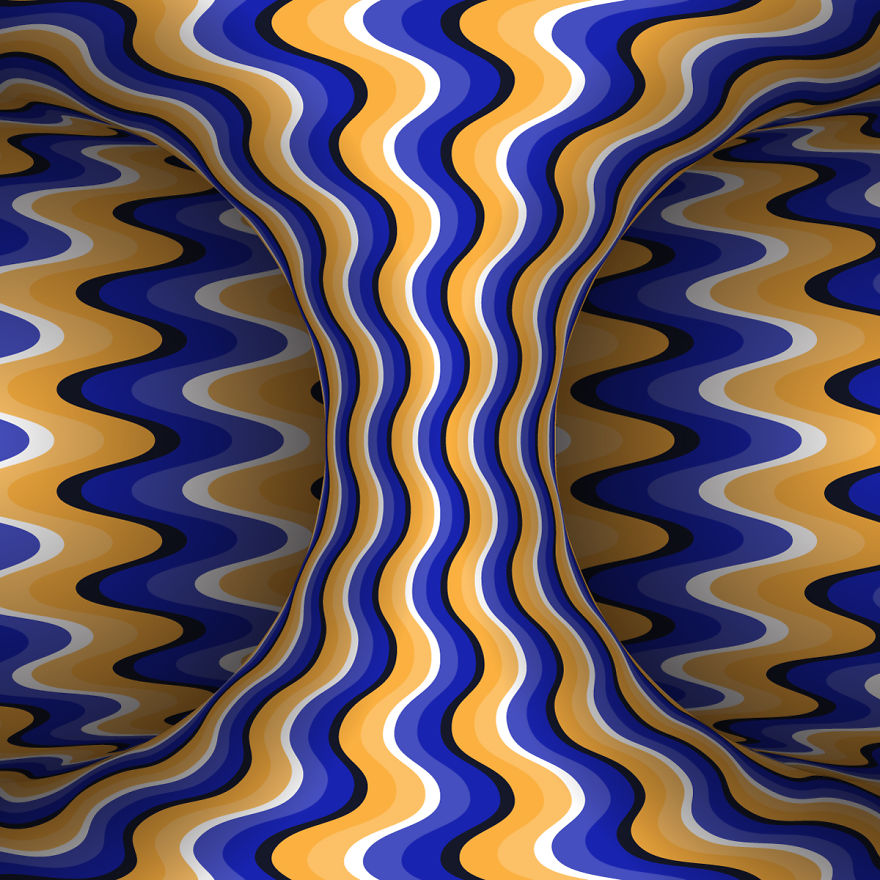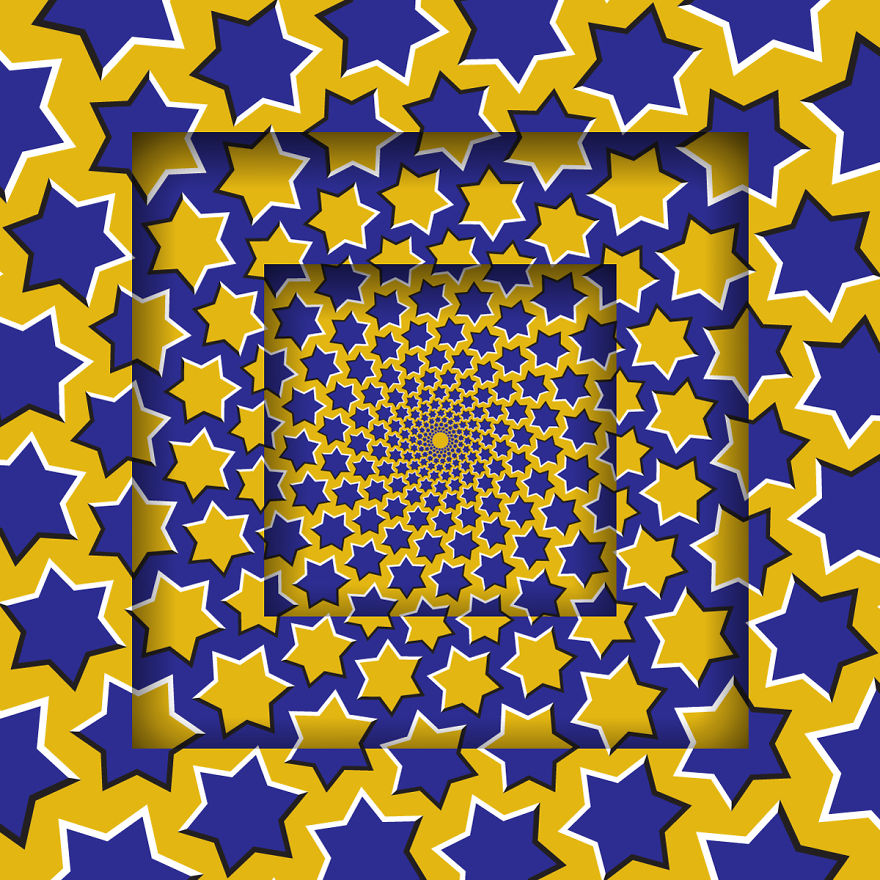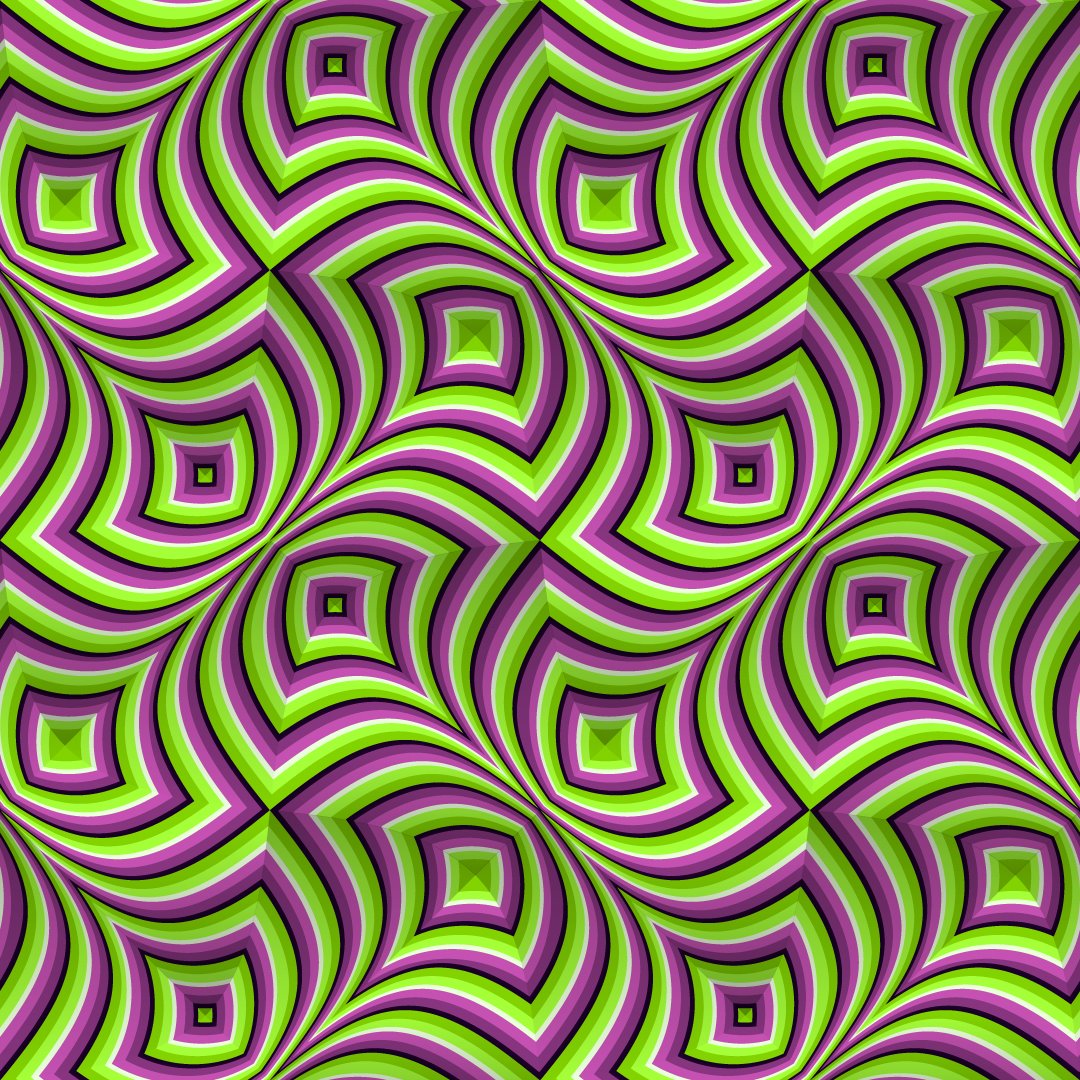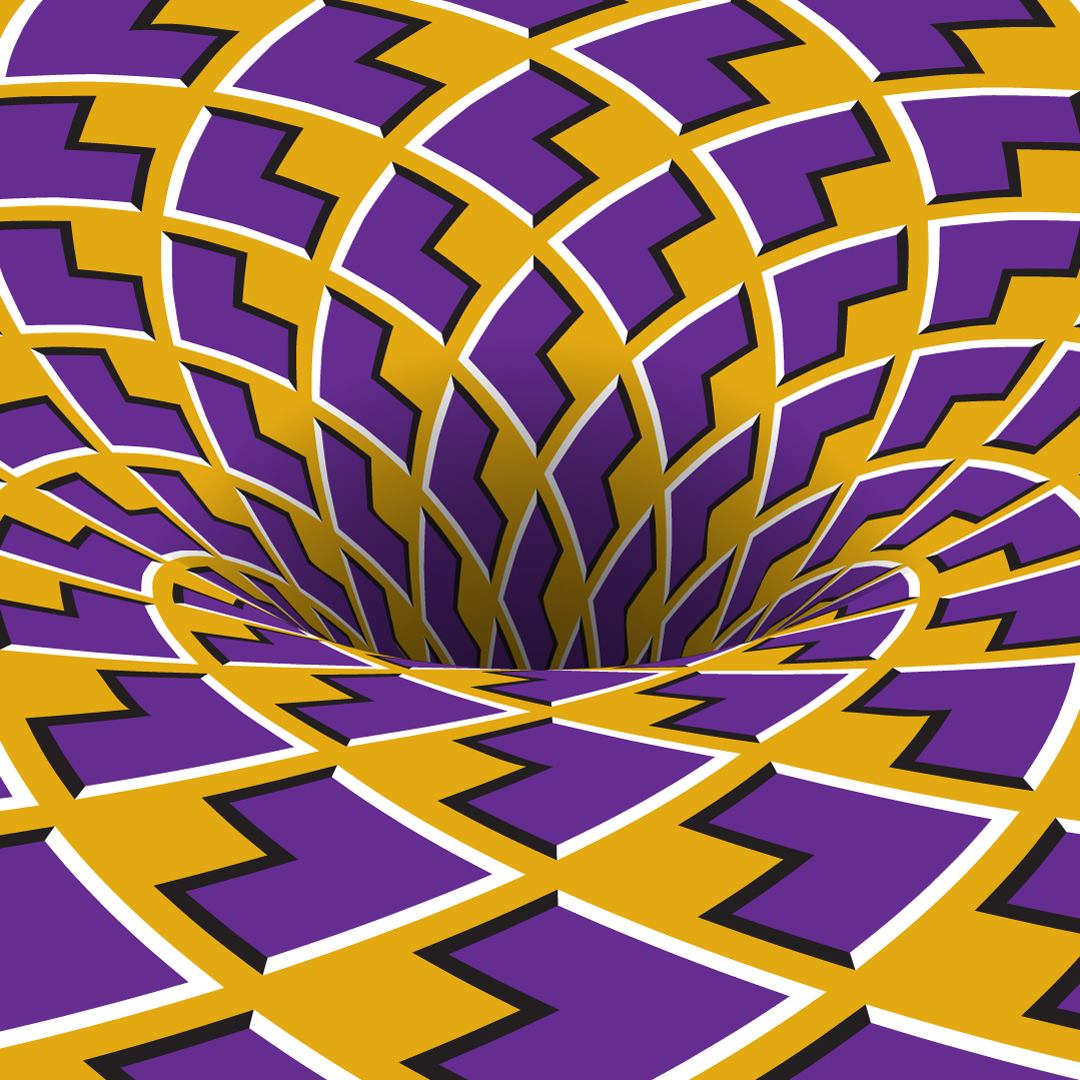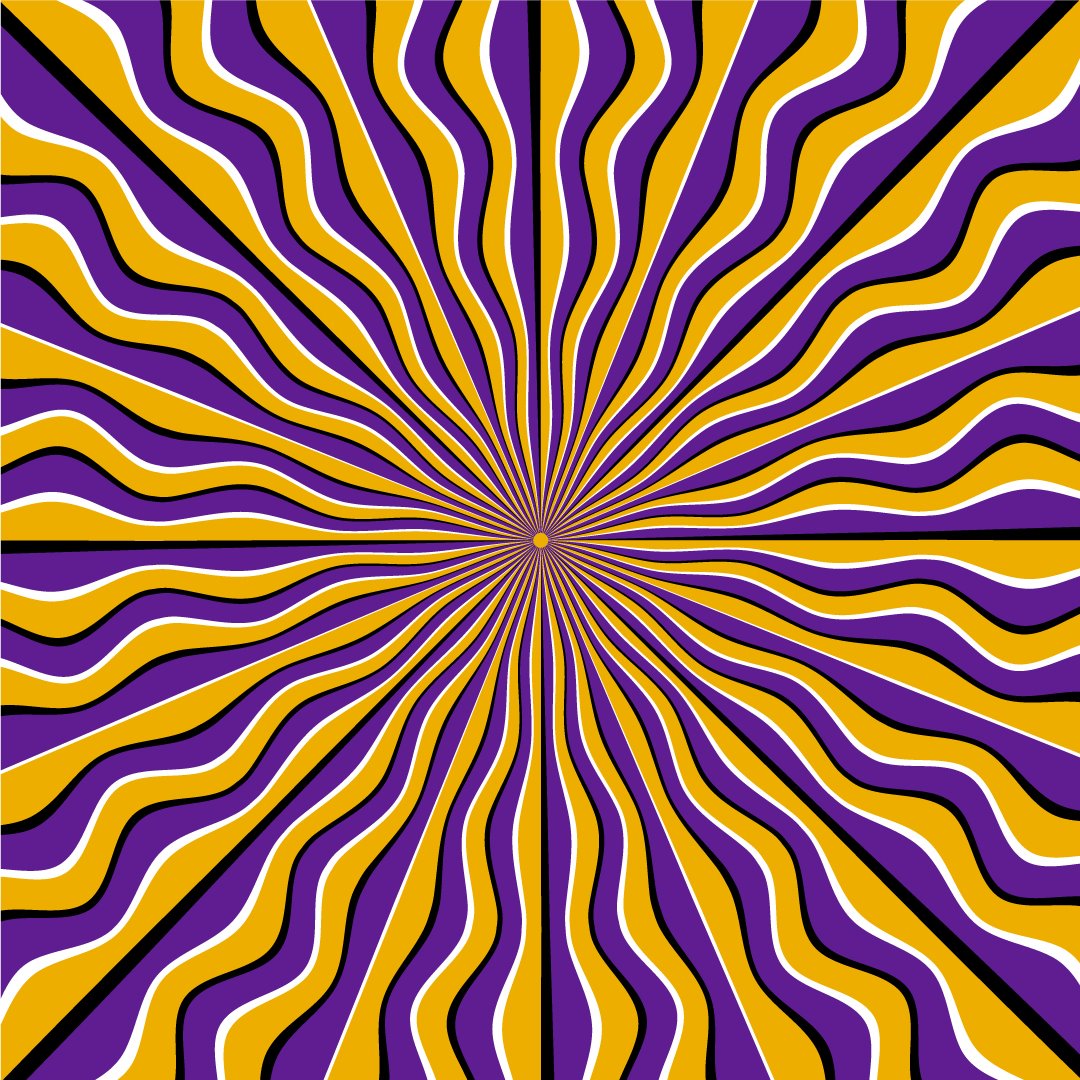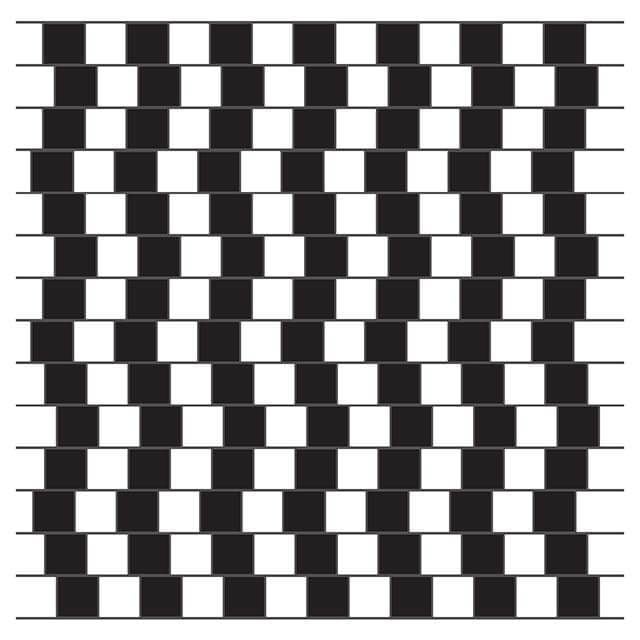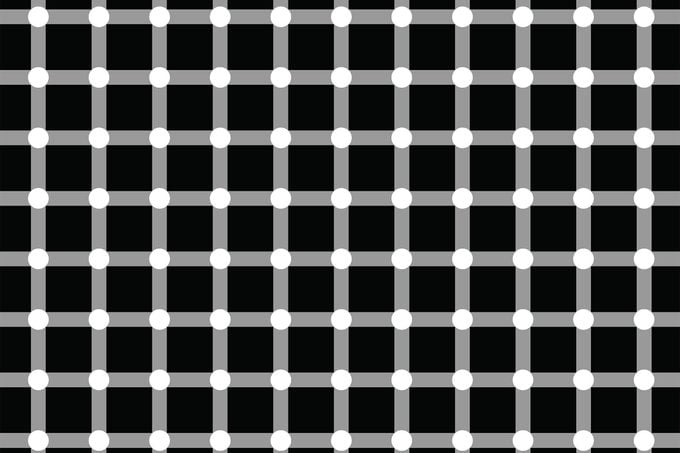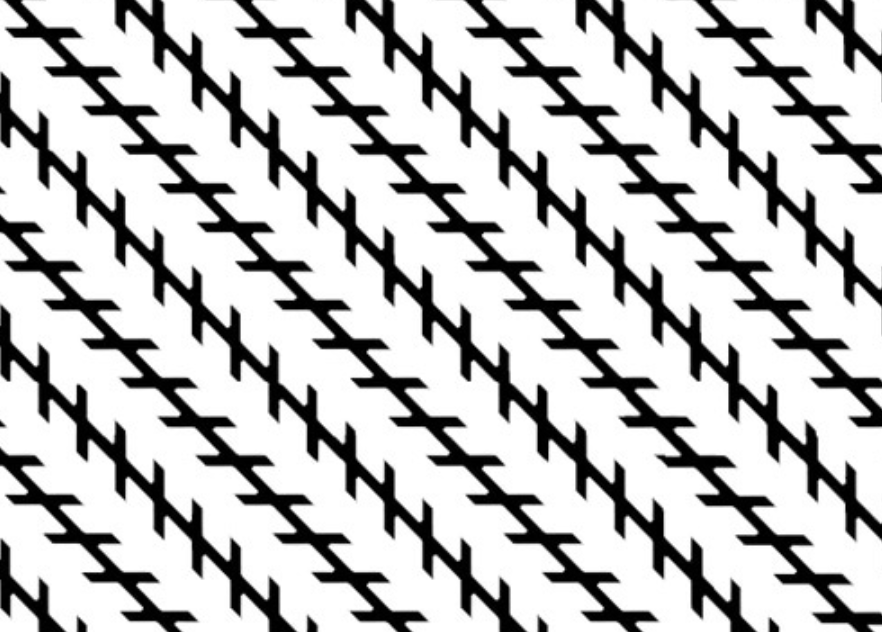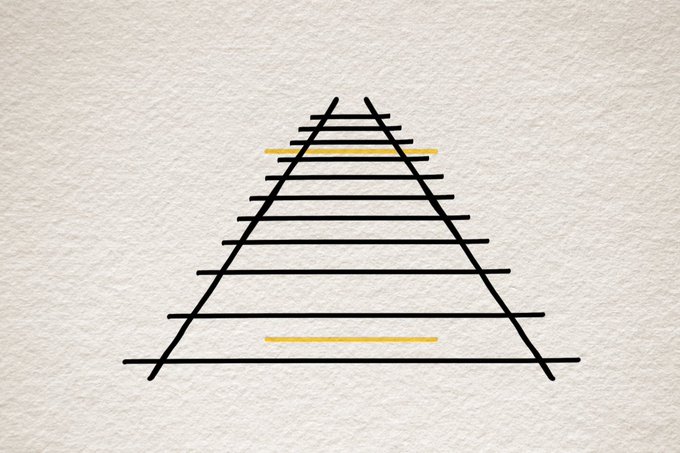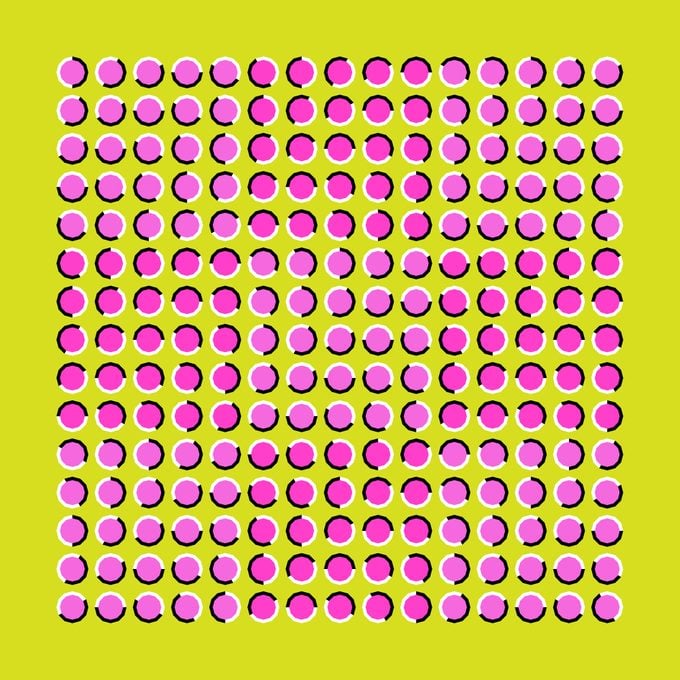


According to Stanford University, this is a "basic effect" whereby "If a bright point appears at one position, and then reappears at a position shifted to the right, we tend to see a single object moving left to right."
https://www.creativebloq.com/news/stupefying-optical-illusion-will-melt-your-brain

This phenomonon is known as the Troxler Effect, discovered by Swiss physician and philosopher Ignaz Paul Vital Troxler (1780-1866). In 1804, Troxler made the discovery that rigidly fixating one's gaze on some element in the visual field can cause surrounding stationary images to seem to slowly disappear or fade. They are replaced with an experience, the nature of which is determined by the background that the object is on.

The deceptive image is called the 'expanding hole'. It was created by Akiyoshi Kitaoka, a psychologist from Ritsumeikan University in Osaka, Japan. Kitaoka further studied the image with a team of researchers at the University of Oslo in Norway and discovered that his illusion could affect the dilation of pupils in human eyes. The researchers tested the expanding hole on 50 subjects falling in the age group of 18-40 years and having normal eyesight.
Interestingly, the illusion worked perfectly even when the size or color scheme of the image was changed during the experiments. "The circular smear or shadow gradient of the central black hole evokes a marked impression of optic flow as if the observer were heading forward into a hole or tunnel," Professor Kitaoka told The Sun while explaining how a human eye perceives the image.
https://www.interestingengineering.com/black-hole-optical-illusion/

In this optical illusion, the black dot in the center of your vision should always appear. But the black dots around it seem to appear and disappear. That's because humans have pretty bad peripheral vision. If you focus on a word in the center of this line you'll probably see it clearly. But if you try to read the words at either end without moving your eyes, they most likely look blurry. As a result, the brain has to make its best guess about what's most likely to be going on in the fuzzy periphery — and fill in the mental image accordingly.
That means that when you're staring at that black dot in the center of your field of view, your visual system is filling in what's going on around it. And with this regular pattern of gray lines on a white background, the brain guesses that there'll just be more of the same, missing the intermittent black dots. Those dots disappear and reappear as your eye jitters around "like a camera that's not being held stably," Arnold says.
There's also another thing that could be going on. If you look at the grid pattern closely, you might be able to see faint white squares where the gray lines meet. That's similar to the dark patches you can see at the intersection of white lines in the Hermann grid illusion. This happens because retinal ganglion cells in the sheet of tissue called the retina at the back of the eye detect contrasts.
"At a non-intersection, you've got a strip of gray line and it's surrounded by a lot of white," Arnold explains. "When you get to an intersection, you've got multiple gray lines intersecting, and not as much white." Because there's less contrast at these intersections with more gray than white, the brain thinks the dot where all the gray lines intersect is lighter than the rest of the gray line, and creates the illusion of a faint white square.
https://www.theverge.com/2016/9/12/12885574/optical-illusion-12-black-dots

https://www.boredpanda.com/i-drew-three-hundred-optical-illusions-and-find-how-to-practically-...




https://twitter.com/uk_vikingdirect/status/756034797802315776

